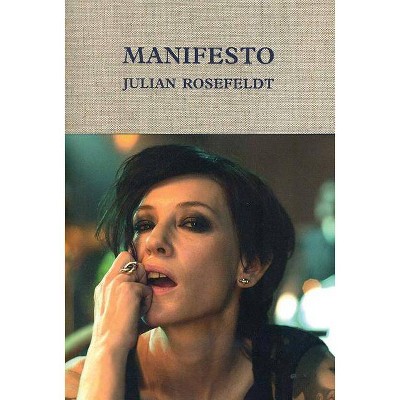Dada Bodies - by Elza Adamowicz (Hardcover)

Similar Products
Products of same category from the store
AllProduct info
<p/><br></br><p><b> About the Book </b></p></br></br>A comprehensive study of Dada's images of the body in various media and geographical centres. Mask or machine-part, grotesque or iconoclastic, the bodily image is confronted as both a reflection of and on the disjunctive, dehumanised society of wartime and post-war Europe, and a blueprint of the New Man.<p/><br></br><p><b> Book Synopsis </b></p></br></br>This is the first comprehensive study of bodily images in Dada. Travelling between the international centres of the movement, from Zurich to Berlin, Paris to New York, it examines a diverse range of media, including art, literature, performance, photography and film. Its overall approach is to confront Dada's bodily images not as organic unities but as fictions that reflect on the disjunctive, dehumanised society of war-torn Europe. These fictions occupy an ambivalent space between the battlefield (in their satirical exposure of ideology) and the fairground (in their playful manipulation and joyful renewal of the body). The book features analyses of works by Max Ernst, Francis Picabia, Hannah Höch, Marcel Duchamp and others, and will appeal to scholars and students of European history, cultural history, art and literature.<p/><br></br><p><b> From the Back Cover </b></p></br></br>Whether iconoclastic or grotesque, assembled from disparate elements or reduced to a fragment, representations of the human form are central to Dada. They can be read as a subversion of the classical body or a response to bodies mutilated by war, but they always defy a single, cohesive explanation. This is the first study to focus critical attention on Dada's limit-forms of the human image. It confronts them not as organic, integrated unities but as fictional constructs, revealing how they operate as a reflection of the disjunctive, dehumanized society of war-torn Europe while simultaneously promoting the blueprint of a possible future body. Through detailed analyses of works by Max Ernst, Francis Picabia, Hannah Höch, Marcel Duchamp and others, the book offers an original and lively survey of the topic, informed by recent theoretical and critical perspectives. The result is a reassessment of Dada, which his shown to occupy an ambivalent space between the battlefield - in the satirical exposure of ideological lies - and the fairground - in the playful manipulation of the body through laughter, dream and dance. <i>Dada bodies </i>takes an international and interdisciplinary perspective, encompassing the movement's various centres and diverse media. Richly illustrated with colour images of the works discussed, it will appeal to scholars and students of European cultural history, art and literature, as well as the interested general reader.<p/><br></br><p><b> About the Author </b></p></br></br><br><strong>Elza Adamowicz</strong> is Professor Emerita of French Literature and Visual Culture at Queen Mary University of London<br>
Price History
Price Archive shows prices from various stores, lets you see history and find the cheapest. There is no actual sale on the website. For all support, inquiry and suggestion messages communication@pricearchive.us




















